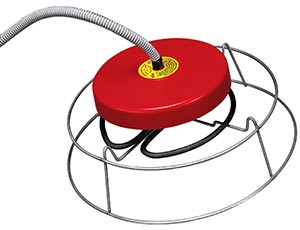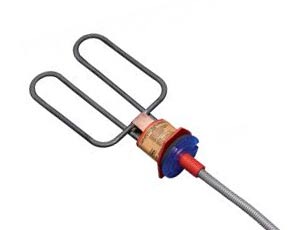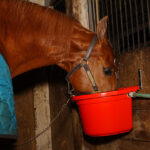 It’s that time of year again. Short days, long nights, freezing temperatures, wind chills, snow…winter is fast approaching. And even though temps are still above average in many parts of the country, it won’t be long before winter has its icy grip on most of the nation. Which means now is the time to start thinking about how you’ll keep your stock tanks and ponds ice-free when the temps plummet.
It’s that time of year again. Short days, long nights, freezing temperatures, wind chills, snow…winter is fast approaching. And even though temps are still above average in many parts of the country, it won’t be long before winter has its icy grip on most of the nation. Which means now is the time to start thinking about how you’ll keep your stock tanks and ponds ice-free when the temps plummet.
When it comes to buying de-icers, you have a lot of options out there between different wattages and types of de-icers, like sinking, floating or ones that fit in your tank’s drain plug. To make your choice easier, we’ve come up with a few things to look for when purchasing a de-icer.
First, let’s talk wattage. The wattage is the measure of electrical flow to the unit. When it comes to a de-icer, the higher the wattage in the de-icer, the more efficient the unit will be at heating the water. The higher the wattage, the faster it will heat your water, and the less overall energy it will use to do so.
| Tank Size | Less than 70 gallons | 70-100 gallons | 100-300 gallons |
| Recommended Wattage | 500 watts | 1,000 watts | 1,500 watts |
When you’re looking to buy your de-icer, follow the guideline below for the amount of wattage your specific tank will need.


Your next option to consider when purchasing a de-icer will be choosing the right style. You’ll see choices for de-icers that sink to the bottom of your tank, models that sit in your drain plug, or models that float. Below is a chart rating each style when it comes to efficiency, animal safety, which ones are best for plastic tanks or best for Rubbermaid tanks.
| Purpose | Floating | Sinking (and Drain Plug models) |
| Efficiency | Best | Average |
| Animal Safety | Average | Good |
| Best for Plastic Tanks | Average | Good |
| Best for Rubbermaid Tanks | Average | Good |
It’s also a good idea to look for a de-icer that is thermostatically controlled, meaning it only operates when it needs to. These de-icers are more energy-efficient since they have a thermostat inside that senses when the water temperature dips below freezing and powers the unit on until the water temperature reaches a set point above freezing. It’s important to note that these de-icers won’t heat the water and make it feel warm; their only purpose is to keep it from freezing over.
Next, take a look at the cords. Are they protected in any way? Look for cords with anti-rub or anti-chew protection. Anti-rub cords generally feature a tough plastic jacket over the cord to protect it from rubbing and fraying over time. Anti-chew cords are wrapped in metal wire to discourage chewing from livestock.
And whether you buy a sinking de-icer or a floating de-icer, adding a guard is always a good idea for an added measure of safety for your livestock.
This cold season, keep your tanks and ponds ice-free with a little help from a de-icer!
Pond Deicer more info:
https://www.graystonecreations.com/Pond-Deicer-Info_ep_122.html







Awesome blog! I like it a lot! Thanks and keep up the great work!